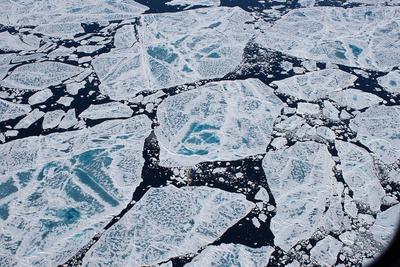Scientists took sea ice cores to study plastic pollution levels in five regions of the Arctic. Stefanie Arndt
Scientists have found a record amount of microplastic particles trapped in Arctic sea ice — as much as 12,000 pieces per liter of ice. The level of plastic pollution, measured in core samples taken at five different regions in the Arctic in 2014 and 2015, measured three times higher than previous studies.
Among the plastic pollution were particles of packaging, paints, nylon, polyester, and cellulose acetate, commonly used to make cigarette filters, The Guardian reported. The scientists said much of the pollution traveled to the Arctic from the Pacific Ocean’s massive garbage patch. But particles of paints and nylon likely originated from ships and fishing nets, they said, demonstrating the increase in shipping and fishing activity in the Arctic as sea ice disappears in response to climate change. The research, led by scientists at the Alfred Wegener Institute (AWI) in Germany, was published this week in the journal Nature Communications.
More than half of the plastic particles found in the ice measured less than a twentieth of a millimeter wide, small enough to be easily ingested by Arctic microorganisms and crustaceans and accumulate as they move up the food chain.
“No one can say for certain how harmful these tiny plastic particles are for marine life,” Ilka Peeken, a biologist at AWI and lead author of the study, said in a statement, “or ultimately also for human beings.”



